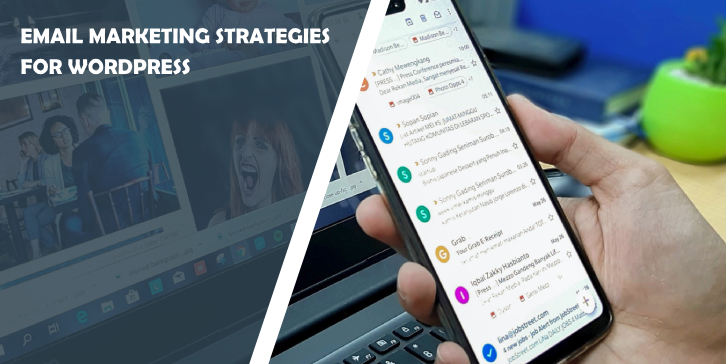In today’s digital world, there are many marketing strategies to propel your business forward. One of the oldest and most foolproof options is email marketing. Through email marketing, it is possible to engage with the audience, maintain targeted communication, and drive conversions.
Moreover, it can turn out to be a quite cost-effective method. So, despite being one of the oldest tools of digital marketing, businesses shouldn’t underestimate its importance.
So, if you use WordPress and want to learn more about how to enhance your email marketing efforts, then this guide will help you get started.

Step 1: Install WordPress Plugin
If you want to have everything in one place, then you definitely need an email marketing plugin. It will help you simply manage customer relationships, build targeted audience lists, send email campaigns, increase your conversion rates, and much more.
In general, one of the basic steps is targeting the audience. It is crucial for success. No matter how great your product or service is, if you don’t reach the right people, it might go unnoticed.To get to the point, a WordPress newsletter plugin can act as a helping hand.
So, at the initial step, it is worth finding a WordPress newsletter plugin to stay in touch with your audience and send them relevant messages.
Today, there are a wide range of plugins for every type of business. Among the most common are booking plugins, which have gained popularity for streamlining appointment scheduling and efficiently managing bookings. Yet, using these plugins comes with its own set of challenges.
There are many pros & cons to using a WordPress booking plugin. The good news is that you have a variety of options, as there are many plugins available. To avoid possible issues in the future, make sure you choose the suitable option that aligns with your business needs.
Step 2: Implement a Signup Form
To launch winning email marketing campaigns in WordPress, you need to collect users’ email addresses. Here, putting the signup form on your website comes first. Ideally, to encourage sign-ups, you should offer exclusive content or discounts. You can utilize different kinds of forms, like pop-ups, event registration, contact forms, etc.
Once subscriptions are collected, it becomes pivotal to segment the email list based on user behavior, demographics, preferences, and more. As a result, you can send targeted email newsletters, thus increasing engagement and conversions.
Step 3: Create Compelling Content
Once you have a list of targeted audiences, it is time to think about what content to suggest. There is a wide range of options, from educational content to promotions and personal recommendations. Here, understanding the preferences of each group is crucial.
For instance, if you have introduced a new line of corporate gifts, you could create a concise blog post or design a dedicated landing page for those in the marketing field. Tailor your content to suggest unique gifts for employees within that demographic.
And to grab their attention, do not forget to keep the subject line appealing, short, and to the point. Otherwise, they cannot even open your email.
You can also use email messaging for sharing your portfolio and highlighting your professional skills. For example, if you are a photographer, you can leverage this tool to share the best 10 wedding photos from your portfolio or craft behind-the-scenes videos.
Email marketing for photographers provides a powerful platform to engage and captivate your audience with content that highlights your expertise.

Step 4: Ensure Mobile Friendliness
Ensuring that your email campaigns are mobile-friendly is crucial. Given that the majority of users open emails from their mobile devices, it’s essential to optimize your campaigns accordingly.
Several reputable email marketing services, such as Mailchimp, Squarespace, and GetResponse, integrate seamlessly with WordPress and offer mobile accessibility. Therefore, be sure to select a service that is relevant and conducive to your email campaigns.
Step 5: Analyze Insights
After successfully following all the steps mentioned above, you can run email marketing campaigns. To measure how successful they were and what you need to improve, it is important to have a look at analytics. These insights will help you enhance customer retention.
Marketers can find possibilities for improvement by thoroughly monitoring analytics such as open rates, click-through rates, and consumer engagement patterns.
Boosting customer retention may present some challenges. We suggest having a look at “The Email Marketer’s Guide to Boosting Customer Retention,” which you can find quite useful.
Wrapping Up
Building a robust email marketing presence on your WordPress site noticeably increases customer engagement and drives results for your business. We explored the top five steps you should take to establish successful email marketing strategies for WordPress.
Start by choosing a suitable email marketing service, segmenting your audience, creating relevant and compelling content, and, of course, analyzing insights on a regular basis to identify weaknesses and mitigate them effectively.





Comments are closed.